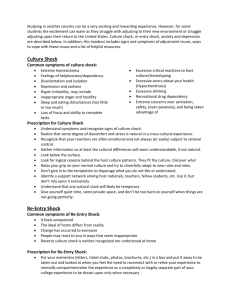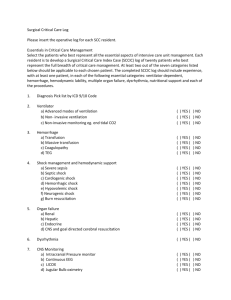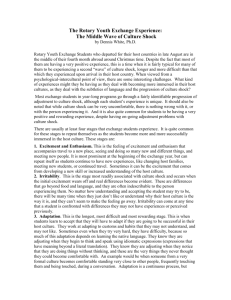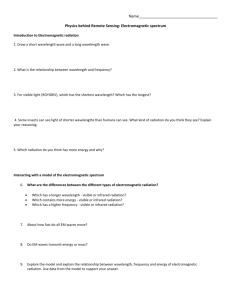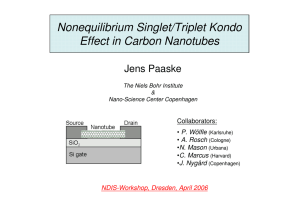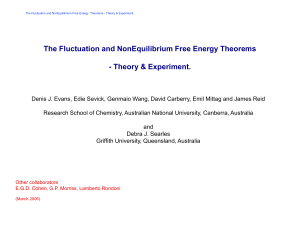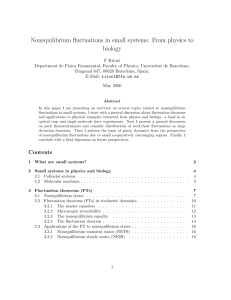nonequilibrium radiation of strong shock waves in earth, mars and
advertisement
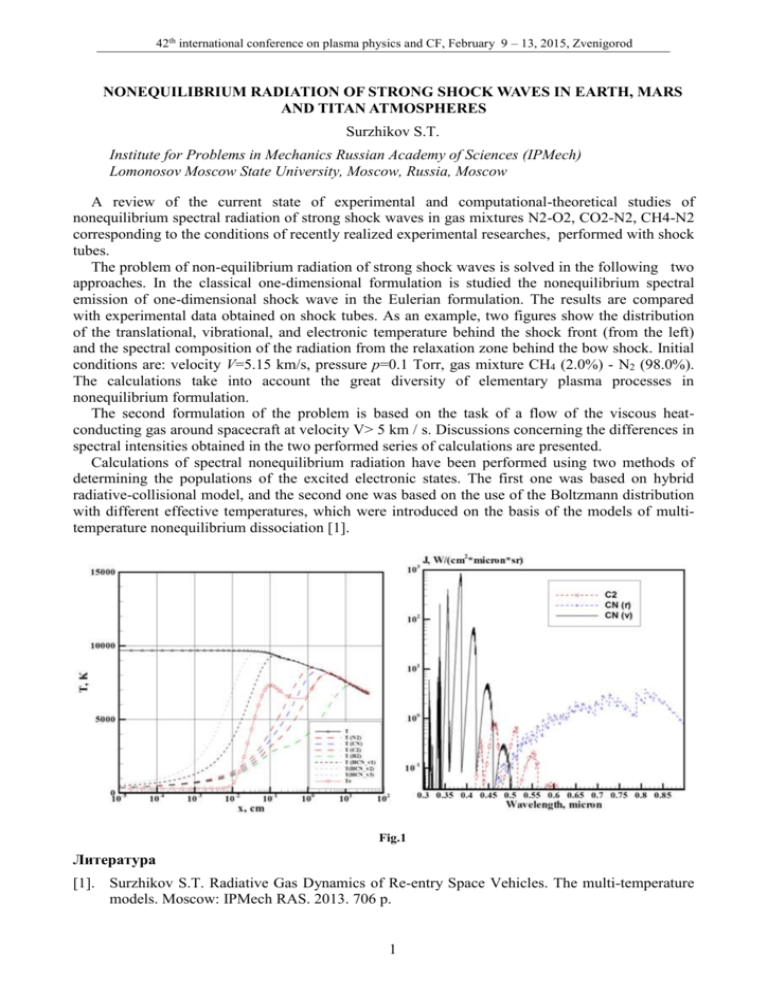
42th international conference on plasma physics and CF, February 9 – 13, 2015, Zvenigorod NONEQUILIBRIUM RADIATION OF STRONG SHOCK WAVES IN EARTH, MARS AND TITAN ATMOSPHERES Surzhikov S.T. Institute for Problems in Mechanics Russian Academy of Sciences (IPMech) Lomonosov Moscow State University, Moscow, Russia, Moscow A review of the current state of experimental and computational-theoretical studies of nonequilibrium spectral radiation of strong shock waves in gas mixtures N2-O2, CO2-N2, CH4-N2 corresponding to the conditions of recently realized experimental researches, performed with shock tubes. The problem of non-equilibrium radiation of strong shock waves is solved in the following two approaches. In the classical one-dimensional formulation is studied the nonequilibrium spectral emission of one-dimensional shock wave in the Eulerian formulation. The results are compared with experimental data obtained on shock tubes. As an example, two figures show the distribution of the translational, vibrational, and electronic temperature behind the shock front (from the left) and the spectral composition of the radiation from the relaxation zone behind the bow shock. Initial conditions are: velocity V=5.15 km/s, pressure р=0.1 Torr, gas mixture CH4 (2.0%) - N2 (98.0%). The calculations take into account the great diversity of elementary plasma processes in nonequilibrium formulation. The second formulation of the problem is based on the task of a flow of the viscous heatconducting gas around spacecraft at velocity V> 5 km / s. Discussions concerning the differences in spectral intensities obtained in the two performed series of calculations are presented. Calculations of spectral nonequilibrium radiation have been performed using two methods of determining the populations of the excited electronic states. The first one was based on hybrid radiative-collisional model, and the second one was based on the use of the Boltzmann distribution with different effective temperatures, which were introduced on the basis of the models of multitemperature nonequilibrium dissociation [1]. Fig.1 Литература [1]. Surzhikov S.T. Radiative Gas Dynamics of Re-entry Space Vehicles. The multi-temperature models. Moscow: IPMech RAS. 2013. 706 p. 1



![Electrical Safety[]](http://s2.studylib.net/store/data/005402709_1-78da758a33a77d446a45dc5dd76faacd-300x300.png)
